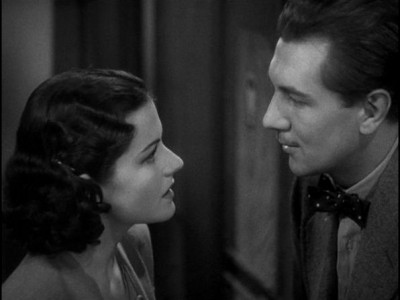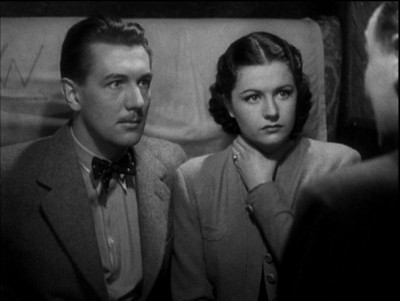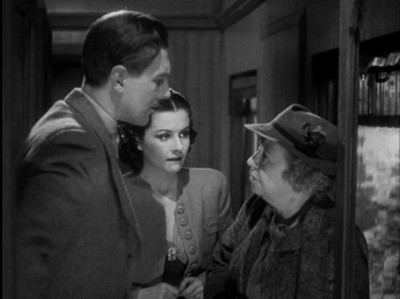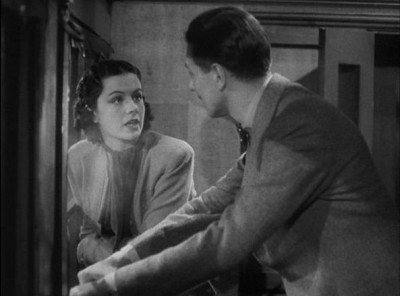
The new biopic Hitchcock is slated to open in Asheville on Dec. 14, so what better way to lead into that than Alfred Hitchcock’s own The Lady Vanishes (1938)? That’s why it’s being run two days before the opening. This is not only one of the director’s best — and most completely entertaining — films, but it’s the film that launched Hitch on his Hollywood career. Hollywood had taken notice of him with The Man Who Knew Too Much (1934) and The 39 Steps (1935), but it was The Lady Vanishes that sealed the deal. It’s not hard to see why. This mystery thriller — with a good bit of comedy content — is just about perfect from every angle. The mystery is clever and well developed. The characters are engaging and perfectly cast. (It’s hard not to wish that Michael Redgrave — here making his film debut — didn’t play in more movies of this type.) And, the film is a veritable treasure trove of both Hitchcock’s wit and his trademark style. It’s the kind of perfectly crafted film that reminds you why you got hooked on movies in the first place.

The film opens with an “impossible” crane shot (courtesy of Hitch’s beloved miniatures) across a snowbound Alpine village and onto a cozy and quaint hotel, which is soon plunged into chaos with news that the train is stuck there till tomorrow due to an avalanche. This first section is all clever setup and character introduction — with only one small, but important, moment introducing us to the mystery thriller aspect of the story. A good deal of the opening finds soon-to-be-married rich English girl Iris Henderson (Margaret Lockwood) “meeting cute” a somewhat eccentric musicologist named Gilbert (Michael Redgrave). It’s essentially a screwball comedy reworking on the meeting of Astaire and Rogers in Top Hat in a very different tone. But we also meet a pair of “veddy British” cricket enthusiasts — Caldicott (Naunton Wayne) and Charters (Basil Radford) — trying to get back to England for the test matches. (This pair proved so popular with British audinces that the duo turned up in four subsequent movies as the same characters.) And, most importantly, we meet the seemingly dotty old English school mistress Miss Froy (Dame May Whitty).

The central thriller story only kicks in the following morning when the train departs and someone tries to drop a flower-box on Miss Froy’s head and beans Iris instead. The old lady takes care of Iris, trying to revive her with some tea in the dining car and chatting with her in a friendly manner. Everything seems — fine until Iris awakes from a nap and finds that Miss Froy has vanished. Worse, everyone denies ever having seen her, and it’s quickly dismissed by a friendly medico, Dr. Hartz (Paul Lukas), who happens — on the train as the result of the blow to her head. Fortunately, Gilbert is also on the train and takes her side — or at least tries to, which isn’t easy in light of the denials of seemingly disinterested parties regarding Miss Froy’s existence. From here, the mystery only deepens — until what’s really at the bottom of it all is revealed, which only lands them in even greater peril than anyone had imagined.

Of course, part of the appeal of the film lies in the fact that it’s part of — and an important part of — the great history of movies that take place on that most inherently cinematic location: trains. Trains had been a part of the movies since the Lumière Brothers scared the pants off an audience by showing a train pulling into a station in 1895. From those humble beginnings, movies that took place on trains would become a cinema mainstay — and often in the service of some kind of thriller. The Lady Vanishes was by no means the first such thriller, but it may well be the best. It’s certainly in the running.
Also, note the presence of the name Alma Reville in the credits for “continuity,” which in this case doesn’t mean the person responsible for keeping track of who is holding what in which hand between shots. No, it means “screen continuity” — the person who took the screenplay, polished it and made it a workable blueprint for the film. Alma Reville was also Mrs. Hitchcock (played by Helen Mirren in the new film), the frequently overlooked contributor to the Great Man’s movies.
Plays on Wed., Dec. 12 at 7:30 at Carolina Asheville Cinema 14




Is this playing in the Cinema Lounge?
No, in one of the actual theaters (most likely no. 6). It’s a ticketed showing — $5 for members, $7 for the general public.